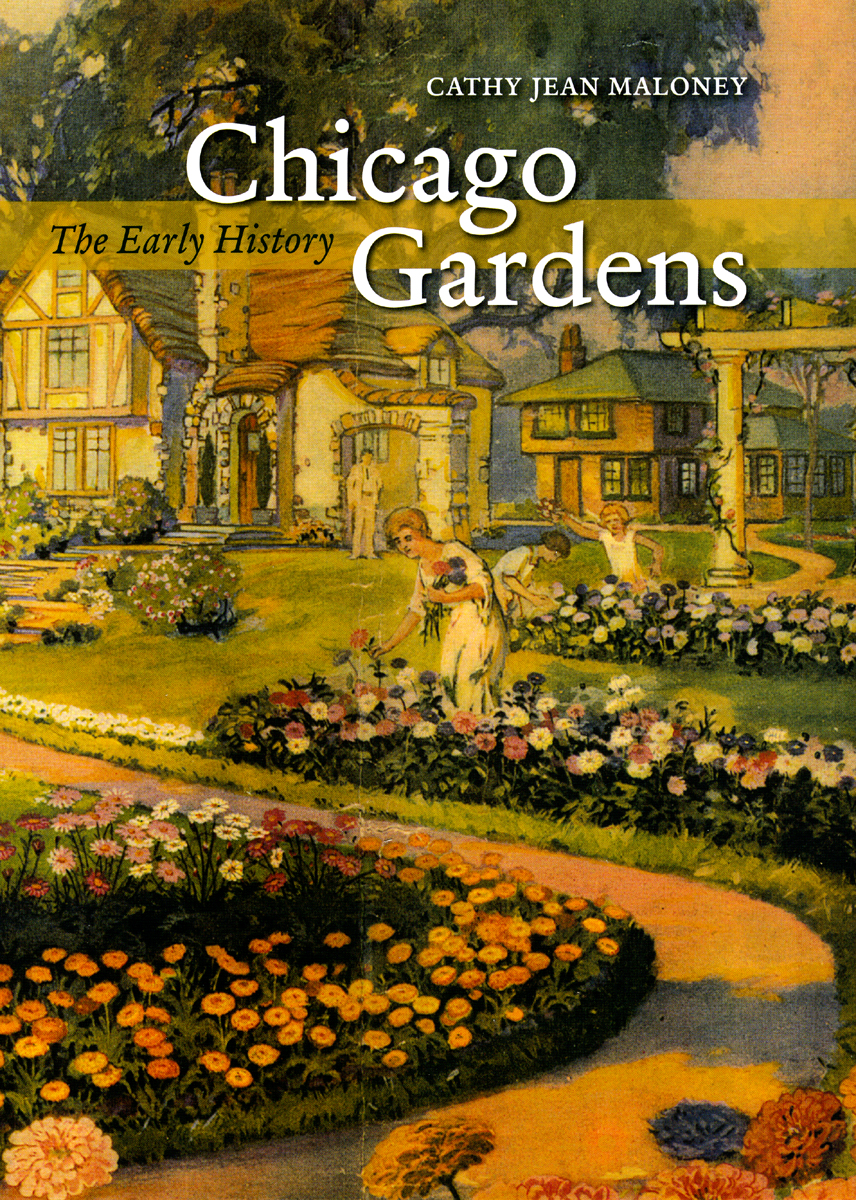Ragdale
1260 North Green Bay Road
Lake Forest, Illinois
Web site
Ragdale, an elegant country house on the North Shore, is surrounded by exquisite gardens, woodland trails, and expansive prairie views. Built as a family summer home by one of the nation’s leading Arts and Crafts architects, Howard Van Doren Shaw, Ragdale has inspired generations of artists. Today, it is a retreat for artists, and the grounds are undergoing a remarkable rehabilitation.
Ragdale is a romance, a story of a gifted artist and his talented wife and family. This Arts and Crafts home and landscape, which embraced generations of the Van Doren Shaw children, was owned by the same family for nearly a hundred years. Ragdale’s gardens evolved with sensitivity and respect for the original design. Created in 1898 by local architect Howard Van Doren Shaw as a family retreat, Ragdale, with its quiet, country setting, was muse to generations of the artistic Shaw family.
A Yale and MIT graduate, Howard Van Doren Shaw became the architect of choice for many of Lake Forest’s country estates, including those for the Swift, Ryerson, and Donnelley families. Shaw designed clients’ homes to blend seamlessly with the landscape. Circulation patterns around the home, and garden views from within the home were all carefully planned to integrate indoors with outdoors.
 Tall locust trees grace the front of Ragdale. Howard Van Doren Shaw enhanced the exterior of his summerhouse with handmade accents, including outdoor benches and signature window boxes. Ca. 1899. Courtesy of Ragdale Foundation and Lake Forest College Library Special Collections. |
|
Shaw was a romantic, and lover of nature. A vivid picture of the romantic Shaw is this love letter penned to Frances, eight years before they married. Not only is his love of flowers evident, but also his predilection for outdoor pursuits in the bygone, pastoral days of early Chicago.
May 27, 1885
Dear Fanny:
I am very glad that you liked those little violets.
I went out to South Park on my bicycle, with some other boys, & we wandered off toward Woodlawn where the Sunday School picnic-grounds are, & found lots of wild flowers, but couldn’t bring many home because it is so hard to carry anything when riding.
The other boys said they intended to give their flowers to the girl they liked best, so I did the same & sent mine to you.
I think you treated them very well & I guess the flowers felt highly honored to be carried by such a pretty girl.
I’m very sorry dancing school has closed because I see you so seldom now.
With love,
Howard
From his travels in Europe, particularly England, Shaw became enamored of the Arts and Crafts ideal that favored handmade craftsmanship and simple, “honest” design. Ragdale is replete with original touches, from heart motifs on shutters and inglenook, to handmade benches, to the signature Ragdale blue paint on window boxes and trim—a proprietary hue melding tints of robin’s egg and weathered copper.
 Sylvia and “Sister Bill,” as noted on the handwritten caption, gaze at the view behind Ragdale, then an expansive prairie. Courtesy of Ragdale Foundation and Lake Forest College Library Special Collections. |
|
Thanks to Shaw’s benign neglect, the virgin prairie and its precious plants survived unscathed by plow or garden hoe. Sunsets over the prairie create an unforgettable vignette, one forever immortalized by Shaw’s grandson, cartoonist John T. McCutcheon Jr., in his evocative 1912 rendering “Injun Summer.” A green lawn separates the house from the prairie beyond, and in that greensward, Shaw built a bowling green and later a lawn tennis court. Both are now gone. The open vista remains, however, framed by woods on both sides and made even more precious by today’s overcrowded world.
Trees and wooded areas were important parts of the Shaw landscape. Elegant American elms were used to frame views and define space. Only one or two of these elms remain, the rest having succumbed to Dutch elm disease. But charming garden remnants survive in the shady wooded lanes that Shaw designed along Ragdale’s north and south borders. Over a mile and a half in total length, they were designed “to look like 18th-century English country lanes—sun-dappled tunnels, grassy and narrow, between green walls of native shrubbery planted by nature or by Shaw.”
 Old-fashioned perennials and rustic garden ornament, such as these informal stepping stones leading to the wellhead, added casual charm to the garden at Ragdale. Courtesy of Ragdale Foundation and Lake Forest College Library Special Collections. |
|
Landscape Integrity
Today, thanks to the stewardship of Shaw’s poet-writer granddaughter, Alice Hayes, Ragdale is an artists’ retreat. Through a juried selection process, writers, painters, musicians, and other artists from around the world are chosen to live and work at Ragdale. The Ragdale home, and its relationship to major garden areas, is well preserved, although necessary changes were made to accommodate its new public use. One significant garden feature, the so-called Ragdale Ring, an outdoor theater enclosed by low stone walls, was lost to subdivision north of the estate. Frances Shaw, Howard’s wife, used to write plays that were performed in Ragdale Ring.
In 2001, the Ragdale Board established a Landscape Restoration Advisory Committee to develop plans for rehabilitating the grounds. A “dream team” of landscape architects, historians, gardeners, and board members served on the committee and, after more than a year of research and planning, produced a multiphase plan to rehabilitate the gardens. Because Shaw was constantly experimenting with the garden, the plan calls for rehabilitating the garden to the 1920s period—after Shaw’s death in 1926. The first part of the three-phase plan included restoration of Shaw’s handmade posts and split-rail fence bordering Green Bay Road, and accommodation of the parking lot for visitors. Roadside undergrowth and shrubbery were thinned, and young shade trees given more room to grow to maturity. The parking lot, a necessity for Ragdale’s public, is better screened with vegetation.
The landscape immediately surrounding the home and the formal garden area are to be restored. The fountain and St. Martin sculpture areas will be transformed to their original shady-glade appearance. Plantings around the house’s foundation will be simplified, using historic photos as a guide. Walkways in the formal garden will be reestablished and paths recreated to restore the connection between the home and formal garden. Flower borders will be replanned, keeping the original design in mind while accommodating today’s shadier conditions.
Much of Ragdale’s charm, typical of the Arts and Crafts ideal, lies in handmade or personalized garden accents. Many of these ornaments remain today as part of the landscape legacy. There is a story behind each ornament, bringing visitors closer with the Shaw family and their lifestyle.
- Bird Girl: In 1938, Sylvia Shaw Judson, Shaw’s daughter, created the original Bird Girl statue, popularized on the 1994 book cover and movie Midnight in the Garden of Good and Evil. This reproduction was commissioned by Alice Hayes. The original is in Bonaventure Cemetery in Savannah, Georgia.
- Purling Fountain: Just off the home’s south porch is a simple concrete fountain and pool designed by Shaw in 1905. Family history notes that children and adults alike would cool off by dipping their toes in the little wading pool. Water sprays from the mouths of three fanciful fish decorating the fountain’s stone basin. Frances Shaw composed the inscribed poem: “Purling Fountain Cool and Gray / Tinkling Music in Thy Spray / Singing of a Summer’s Day.”
- Garden Gate: The flower and vegetable garden entrance is marked by two concrete gateposts topped with floral-basket sculptures, trademark Shaw motifs. A wrought-iron banner inscribed with R for Ragdale connects the posts. The path ultimately led to Ragdale Ring, long gone.
- Wartime Lambs: These two gentle lambs, works of Sylvia Shaw Judson, greet visitors upon entering the Ragdale compound. During World War II, the family raised sheep, and these peaceful lambs are said to have been inspired by the flock.
- Sundial: This simple Arts and Crafts sundial was designed by Shaw and includes an inscribed verse.
Many landscape views have been preserved at Ragdale—from the open prairie vista to the wooded, shady lanes bordering the property. The cutting garden remains a delightful nod to the past with many of the garden ornaments remaining from Shaw’s day. Despite the necessary changes, the overall ambience at Ragdale is that of a restful country estate.
